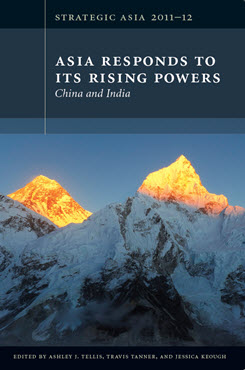China Views India's Rise
Deepening Cooperation, Managing Differences
This chapter examines how China views the rise of India and the implications of India’s rise for China’s core interests and strategic objectives.
EXECUTIVE SUMMARY
This chapter examines how China views the rise of India and the implications of India’s rise for China’s core interests and strategic objectives.
MAIN ARGUMENT
- Contrary to the conventional wisdom, China views India’s rise as a positive development that promotes China’s own core interests and strategic objectives more than it threatens or challenges them. Enhanced cooperation with a rising India allows Beijing to avoid a potentially costly confrontation that would harm the growth of both countries, block the formation of a close U.S.-India relationship, and reduce the overall influence of the U.S. over China.
- China’s strategy toward a rising India combines engagement with deterrence. China pursues comprehensive political, economic, and international engagement with India to advance its broader strategic objectives. China also seeks to deter India from undermining Chinese interests by withholding cooperation or maintaining its policies on specific issues, such as its ties with Pakistan.
POLICY IMPLICATIONS
- Heightened security competition between China and India in the next decade or two is unlikely because China does not view India as a major threat and because of the common interests that the two countries share.
- Because the gap in wealth between India and China continues to grow and because security competition between the two states will be limited, India will not serve as an effective counterweight for other states seeking to gain leverage over China.
- The stark difference in Chinese and Indian elite perceptions of each other may increase misperceptions and miscalculations, thus introducing greater uncertainty into the future of the relationship. China may underestimate Indian concerns, while India may exaggerate the threat posed by China.
Strategic Asia
The Strategic Asia annual edited volume incorporates assessments of economic, political, and military trends and focuses on the strategies that drive policy in the region. Learn more about Strategic Asia.


